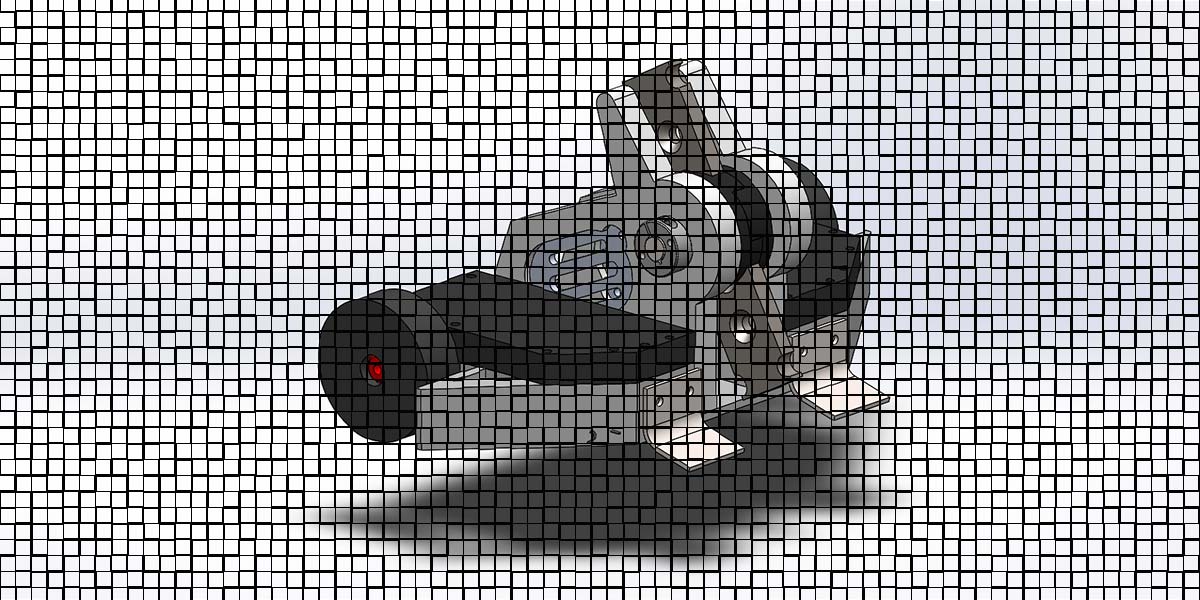
Creating a Phenomena
By Brandon Young View In Digital Edition
Phenomena is a 3 lb US Beetleweight whose goal was to be a competitive robot. In years past, I had originally constructed a Weta kit from Kitbots.com. This kit was fairly successful, but the end goal of building a combat robot is that you can create a unique machine that you build and design from scratch.
At this point, I’ve designed dozens of machines with all varieties of weapons and have constructed about a quarter of them. Most of the designs I try to shoot for have always been to the less-destructive weapons such as lifters and grabbers because I seek to keep the sport diverse in the face of a growing spinner hegemony.
While I’ve had some success with my 1 lb Antweight, Ferocious (Figure 1) with it achieving 2nd place at NERC’s Franklin Institute event back in 2017, it has been much harder to scale up the design due to the exponentially stronger spinners in each weight class. After being knocked out very early in multiple competitions, I decided to (temporarily) join the dark side and build a vertical spinner.
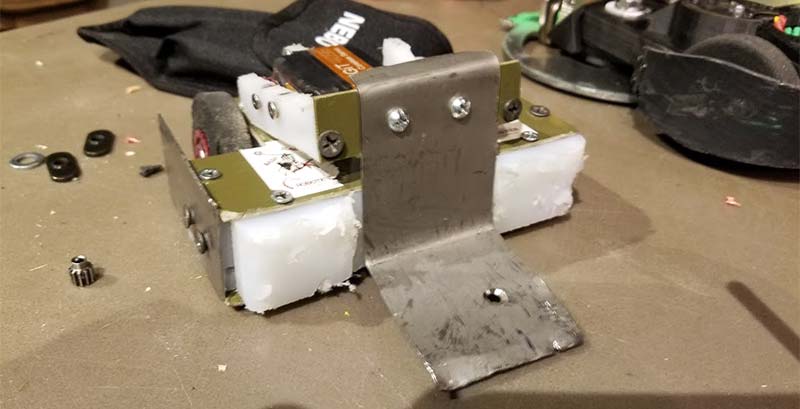
FIGURE 1.
The first version (Figure 2) took about three weeks to design and build before its first competition at Franklin Institute 2018. Fun fact: The blade itself actually came from a fellow builder breaking it off another robot and giving it to me as a gift. Inspiration comes in all manners and means!
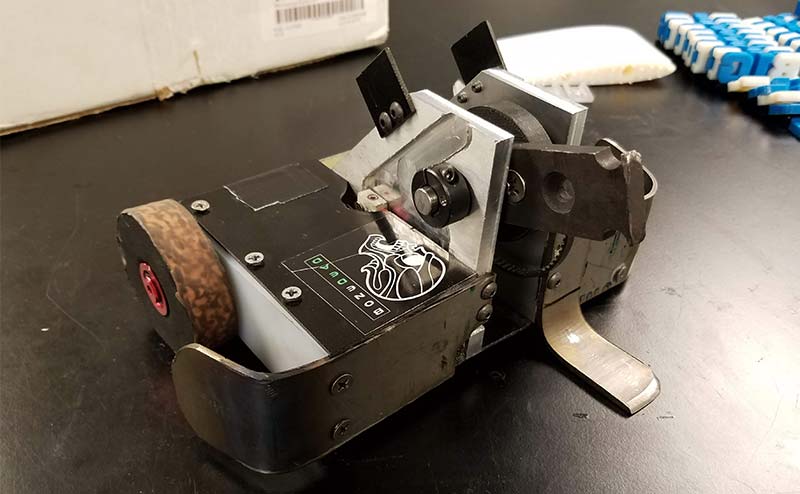
FIGURE 2.
At the competition, it fought other robots including Silent Spring (now a Combat Robot Hall of Famer) and Squishy (built by the same team that made Ribbot from BattleBots™) in some epic matches. These can easily be found by a quick search on YouTube.
While Phenomena didn’t defeat these two machines, the design’s durability was respectable, and the weapon clashes were a great ‘wow’ factor. Since Phenomena proved itself in combat, it earned itself a redesign.
In Figure 3, you can see the shape of the new robot.
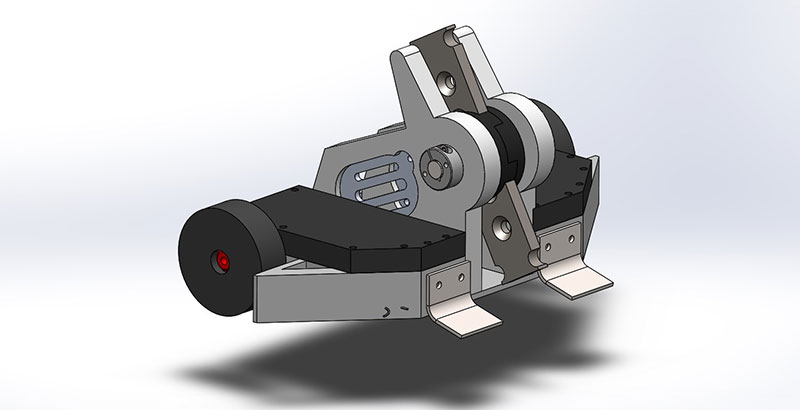
FIGURE 3.
This version had a few significant improvements over the original:
- This robot was wider and not as long. By widening the base, it gives increased stability as vertical spinners tend to have more trouble moving left and right.
- It had to self-right. In the match against Silent Spring, it got stuck on its back when the blade died. While ideally the blade would always be spinning, the newer version’s ‘bunny ears’ and angled backside allow it to drive well even on its back, and self-right fairly easily if the blade has some speed. While it isn’t known if the robot can self-right without the blade spinning, it still is an improvement over the original.
- This version could take more hits. The original robot version had four large pieces (the two drive rails and the two weapon rails) which were connected through the front, back, and bottom plates. While it’s strong, once the front and rear armors were damaged, it didn’t leave much strength for some components, leading to more damage overall.
In Figure 4, you can see most of the robot has formed from a one inch tall UHMW tub. UHMW is a very resilient and flexible material, meaning that all the impacts it takes would be distributed through the chassis. This then connects to the black top pieces from Markforged Onyx material which provides some stiffness while also clamping the motors down.
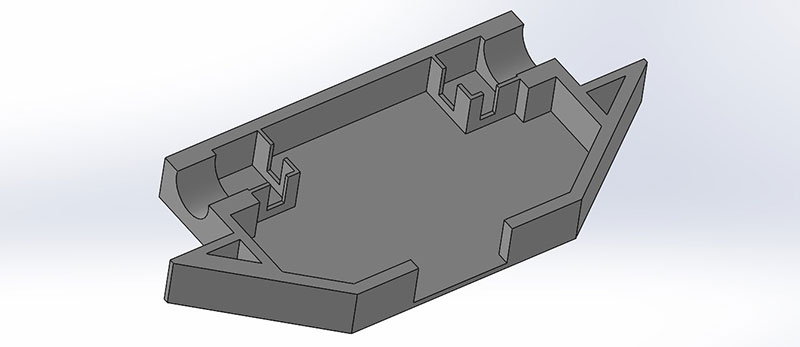
FIGURE 4.
With all these things in mind, the robot was assembled (Figure 5) and competed at the Frozen Fracas.
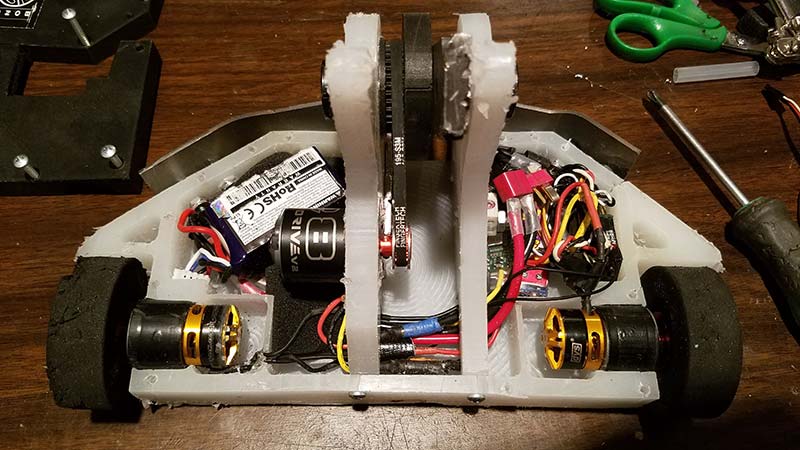
FIGURE 5.
It came away with a 2-3 record which indicated much still had to be improved. Unfortunately, it didn’t receive the maintenance and effort to be fixed before Motorama 2019, resulting in two disappointing losses where the weapon controller strangely refused to spin, and the drivetrain gremlins weren’t addressed.
In the time between Motorama and NERC’s Battle on the Parkway at the Franklin Institute, Phenomena received improvements in the form of a new chassis plate, a new titanium front armor configuration (Figures 6 and 7), and maintenance on the robot’s drivetrain.
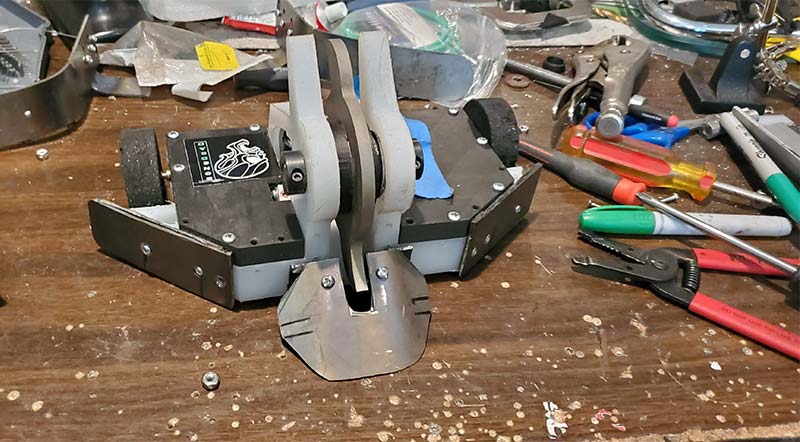
FIGURE 6.
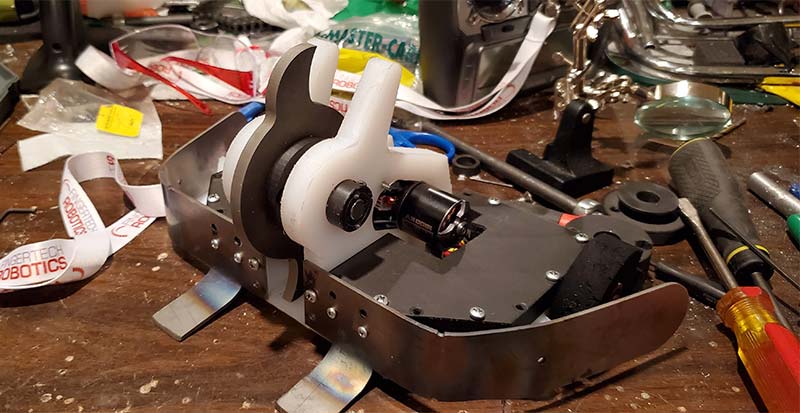
FIGURE 7.
For more updates on the team, be sure to like and follow Bone Dead Robotics on Facebook or on Instagram at @bonedeadrobotics. SV
Article Comments